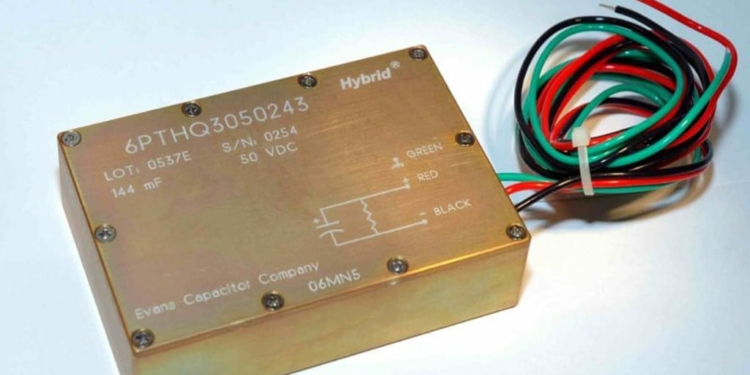source: Naval Technology article
Evans Capacitor develops high-power density hybrid tantalum capacitors for challenging naval defence applications, with energy storage devices offering interrupted backup supply for marine subsystems.
Reliable capacitors for laser diode drivers and phased-array radars
Low equivalent series resistance (ESR) capacitors provide high-current pulses for laser drivers and phased-array radars. EVANSCAPS feature unlimited lifecycles and low inductance, ensuring reliability to critical naval systems. They provide reliable power solutions for many mission-critical systems and can withstand temperatures of -55°C-125°C. EVANSCAPS are energy-efficient, compact and lightweight, helping to achieve demanding design goals, while they are available in a range of styles to meet specific maritime requirements.
Energy-dense capacitors for naval systems
Handheld / airborne laser systems and phased-array radars require pulsed, solid-state diodes or transmit/receive (T/R) module pulses, which require high currents and bulk capacitance. Capacitors are available in several DLA (DSCC) certified voltage and capacitance ratings (10V-125V) to provide optimised performance characteristics for maritime operations. Theses highly efficient products minimise voltage droops for laser drivers and are coated in tantalum. They are airtight, with no outgassing to maintain high-performance optics.
Instant-power capacitors for marine applications
EVANSCAPS offer five to ten times the volumetric energy density of aluminium electrolytic capacitors and provide instant power. They have ultra-low ESR, especially in the TDD series, to control vigorous duty cycles with minimal cooling requirements. TDD series discharge voltages, currents, pulse widths / frequencies are modifiable to ensure maximum efficiency in naval subsystems.
Rugged capacitors for gallium nitride (GaN) T/R modules
Gallium nitride (GaN) radio frequency (RF) T/R modules provide advantages in energy density. EVANSCAPS expand this by offering the highest density capacitors to drive pulses. EVANSCAPS feature a rugged design and demonstrate more than five million hours mean time between failures (MTBF) in powerful phased-array systems. Capacitors have a density of up to 2J per cubic centimetre in the desired voltage range. Legacy systems benefit by replacing older technology with high-powered GaN T/R modules for a more efficient naval system.
About Evans Capacitor
Evans Capacitor’s products are manufactured in the US and installed in many naval applications. Evans is registered under the International Traffic in Arms Regulations (ITAR) regime and is AS9100-certified. Evans’s products demonstrate strong field reliability and have been installed in naval operations for ten years. They have powered the Apache Arrowhead target acquisition and designation sight / pilot night-vision sensor (M-TADS / PNVS) system for more than one million hours. The company’s experience and wide range of capacitor products help optimise marine projects.































